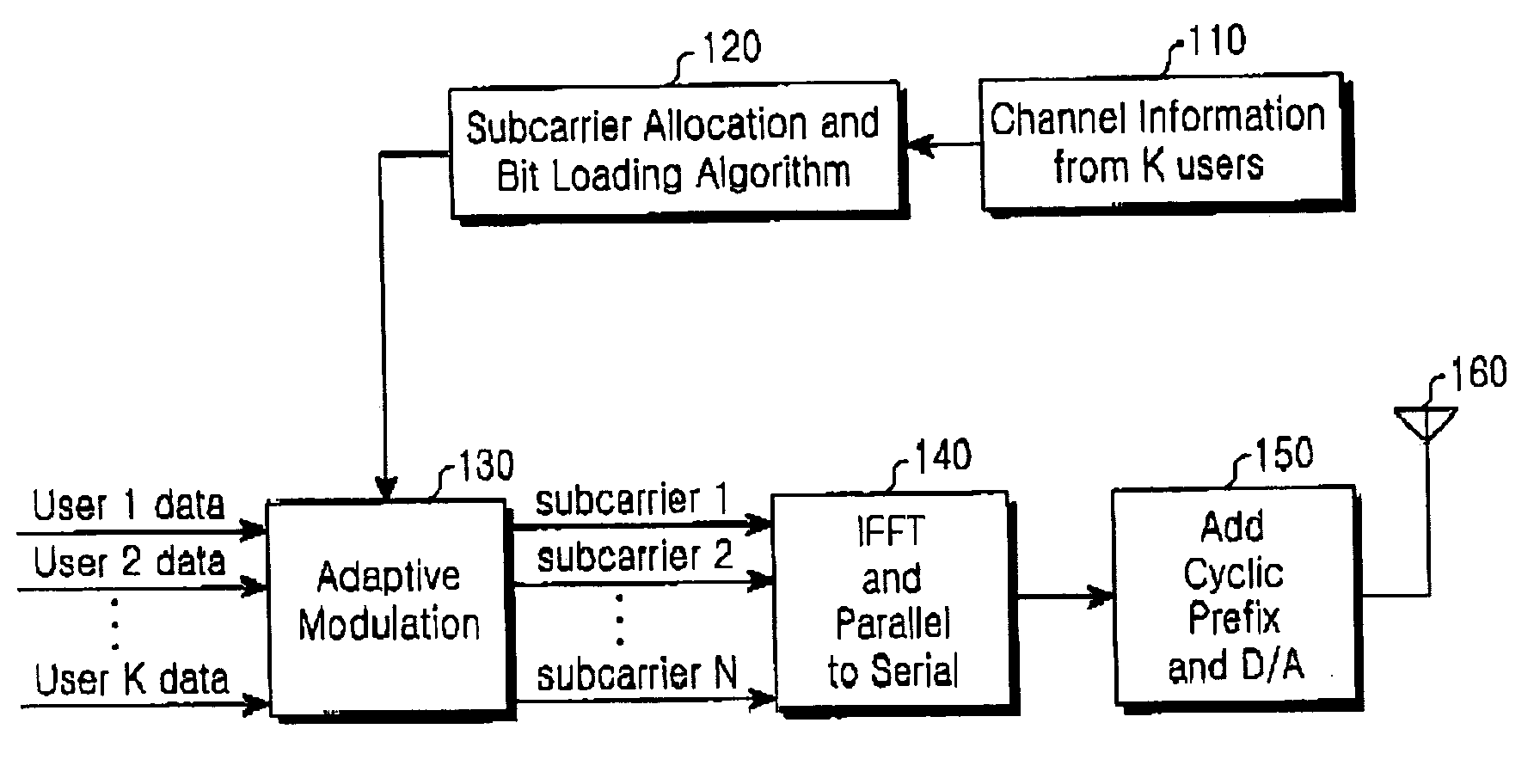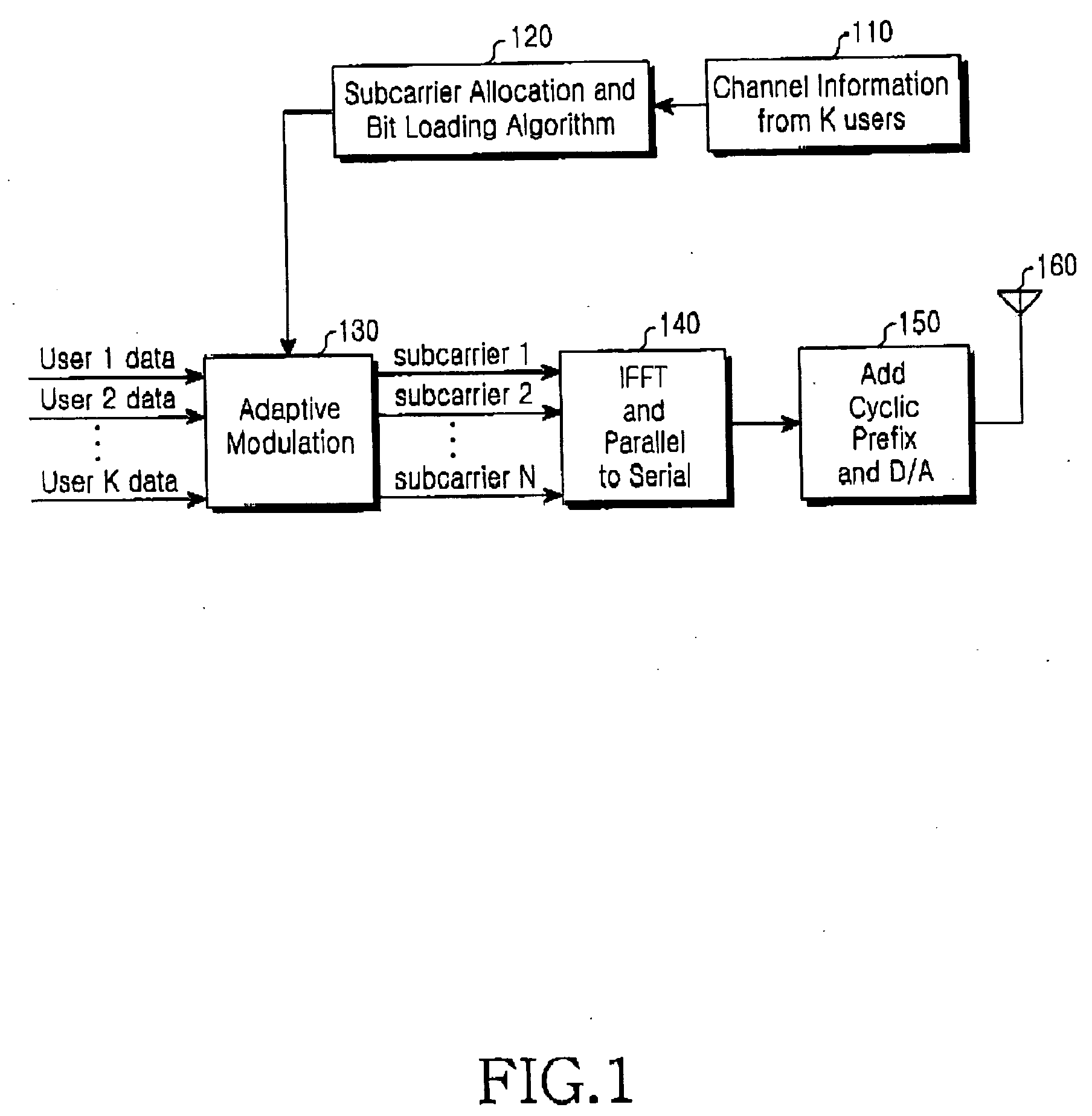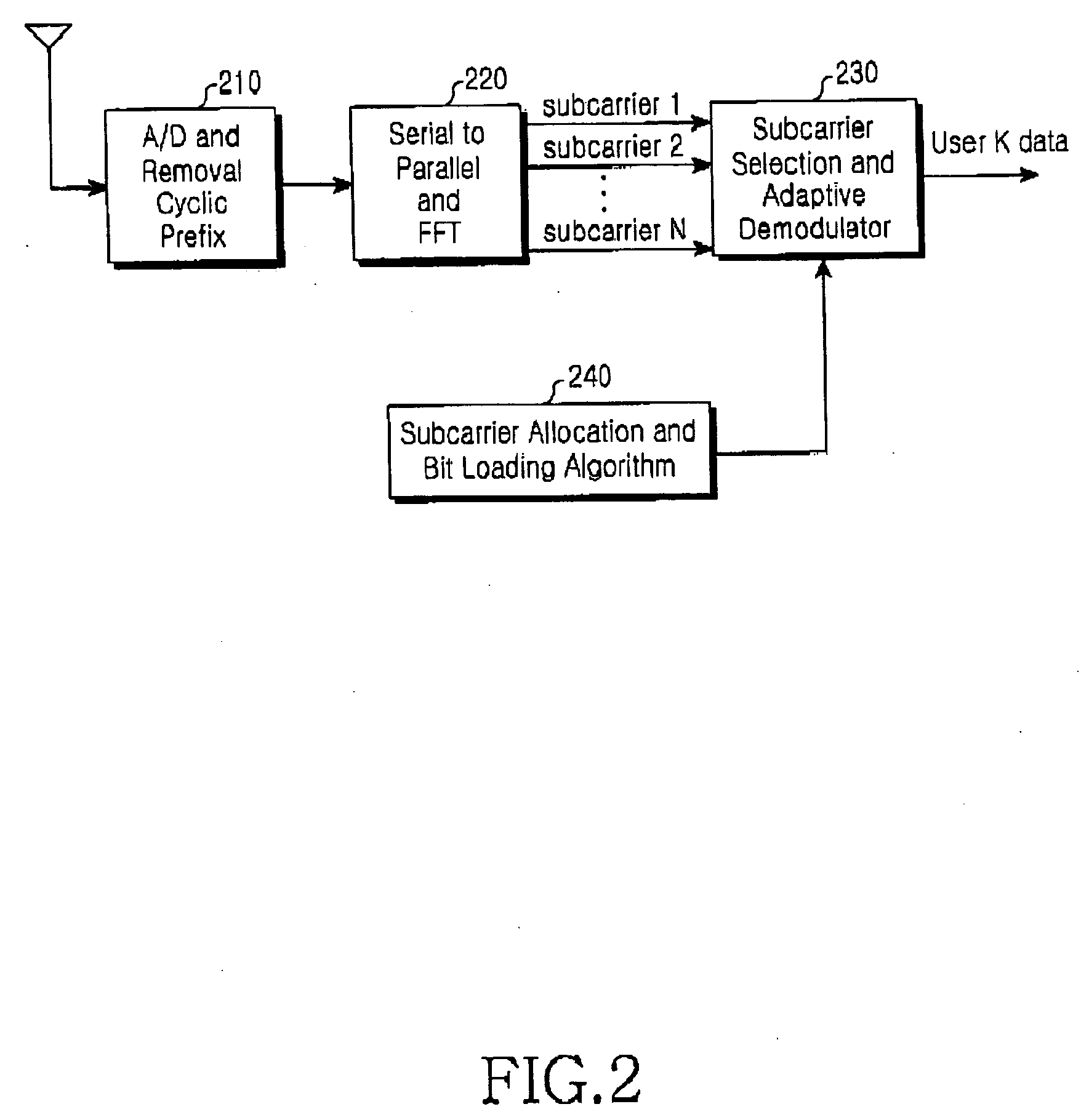Method for allocating subchannels in an OFDMA mobile communication system
- Summary
- Abstract
- Description
- Claims
- Application Information
AI Technical Summary
Benefits of technology
Problems solved by technology
Method used
Image
Examples
first embodiment
2.2 First Embodiment
[0059] An RA-based sub-optimization scheme for simultaneously performing an adaptive modulation for all users according to the first embodiment of the present invention, which is a suitable extension of the conventional technique of solving the RA problem for the present invention, will be described in detail herein below.
[0060] The proposed RA-based sub-optimization scheme is similar to the scheme of finding a solution for the previously-proposed RA optimization problem using the LP (Linear Programming), except that the subchannel allocation and the bit allocation are separately performed in the RA-based sub-optimization scheme. That is, a process according to the first embodiment of the present invention includes a subchannel allocation process and a bit allocation process. The subchannel allocation process includes a step of modifying the above-mentioned IP problem into an LP problem and a step of finding a solution for the modified LP problem (which is a del...
second embodiment
2.3 Second Embodiment
[0071] Generally, the fixed transmission rate of the user set UFixed using services such as a voice service, a Video-On-Demand (VOD) service, etc., is smaller than the transmission rate of the user set URA. Therefore, the subchannel and bit allocation process for the users of the set UFixed is expected to be relatively simpler than that for the users of the set URA. Accordingly, the second embodiment of the present invention proposes a method of consecutively allocating the subchannels to the users of the two sets.
[0072]FIG. 3 illustrates a sub-optimization algorithm of a consecutive subchannel allocation according to the second embodiment of the present invention. Referring to FIG. 3, in step 310, subchannels and bits corresponding to the subchannels are first allocated for RA mode users having variable data transmission rates. That is, subchannels and bits are first allocated to the users of the set URA.
[0073] In step 312, an initial number NMA of subchannel...
PUM
 Login to View More
Login to View More Abstract
Description
Claims
Application Information
 Login to View More
Login to View More - Generate Ideas
- Intellectual Property
- Life Sciences
- Materials
- Tech Scout
- Unparalleled Data Quality
- Higher Quality Content
- 60% Fewer Hallucinations
Browse by: Latest US Patents, China's latest patents, Technical Efficacy Thesaurus, Application Domain, Technology Topic, Popular Technical Reports.
© 2025 PatSnap. All rights reserved.Legal|Privacy policy|Modern Slavery Act Transparency Statement|Sitemap|About US| Contact US: help@patsnap.com



